
Vol. III, No. 5, May 2025
Growing and elevating agritourism food & beverage experiences
When people think of food at a farm, they often picture nostalgic treats like caramel apples, kettle corn, or apple cider donuts - delicious, yes, but those fall festival foods just scratch the surface of what's possible. Today's agritourism is evolving, and so are its food and beverage offerings and events beyond just comfort foods at fall festivals. This article explores how developing and elevating your farm's culinary experiences can deepen guest satisfaction, increase perceived value, and significantly boost profits.
Progression of economic value & the magic of the transformational experience
We have discussed the progression of economic value and the experience economy for years. If you aren't familiar with the subject, you can read our most recent article here. However, a quick and dirty version follows, using apples as an example.
- Commodity (Level 1): Simply selling the apples from the orchard as a commodity.
- Goods (Level 2): The apple cider donut you sell at a concession stand or farm market will fall in this level and sell for a few dollars.
- Services (Level 3): Put some ice cream and a drizzle of caramel on the donut and serve it in a restaurant setting, and the same donut will double or triple in price.
- Experiences (Level 4): Serve that same dessert as part of a farm dinner, not in a restaurant but at a long-table dinner outdoors at sunset, and you have climbed to level 4 experiences, and the price increases accordingly.
- Transformations (Level 5): Finally, add to this a pre-dinner apple tasting with the chef discussing the different apple types and their flavor profiles, and you will have reached the pinnacle of the progression of economic value, level 5, the transformational experience. At this point, you may be charging twice what you would for the same food in a typical restaurant setting and having your guests thank you for the privilege.
So, what's driving the demand for these elevated experiences? Several cultural and consumer trends are aligning to make culinary agritourism an increasingly appealing option for your guests, allowing you to command a premium price for the experience.
The ongoing foodie movement
Approximately half of Americans (47%) identify as foodies according to a 2024 Mintel survey. That number increases to two-thirds (66%) when looking at Millennials. Foodies' spending habits differ from non-foodies and include an increased desire for high-quality, sustainable ingredients and unique dining experiences. Foodies are prepared to spend more on these experiences and budget accordingly. They are also more interested in food-related activities like tastings, cooking classes, and food-focused tours, all of which align perfectly with culinary agritourism.
Local, fresh, sustainable food
According to the National Restaurant Association's 2025 Culinary Forecast, sustainability is the number one trend for the year. Consumers seek out the fresh, local, sustainable dining options culinary agritourism offers. For years, we have reported on this trend and the willingness of consumers to pay more for brands they feel align with their goals of sustainability. This trend spans income, age, gender, and even political lines.
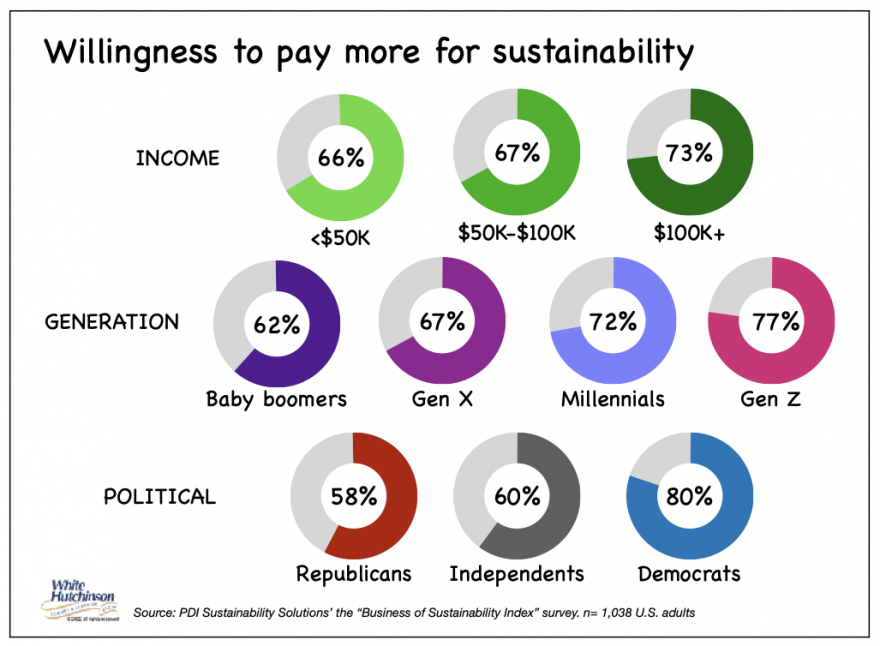
A quest for authenticity
Consumers are increasingly looking for authenticity in everything from brand transparency to authentic cultural encounters. Culinary experiences that emphasize traditional food and food preparation and allow guests to get a glimpse of what rural life is like feed this desire. But authenticity isn't just about local food-it's about creating meaningful human connections in a genuine, unplugged setting. Experiences that allow diners to put down their phones, unplug, and socialize over quality food and drink in an environment free from distractions is an increasingly rare occasion and one that our basic human programming craves.
The farm-to-table dinner
Agritourism venues are uniquely positioned to satisfy all three desires by serving delicious local food in an authentic, unique environment, often called a farm-to-table or long-table dinner. In its most basic form, a farm-to-table dinner is a meal, usually multiple courses, served on the farm in an appealing, natural setting, showcasing farm-grown, fresh seasonal food and paired with quality beverages, both alcoholic and non-alcoholic. Often, they are served at one long communal table in a farm building, field, or meadow and referred to as long-table dinners. Quality farm-to-table dinners frequently command a price of $150-$200 per person, far more than the price of the same meal at a restaurant.
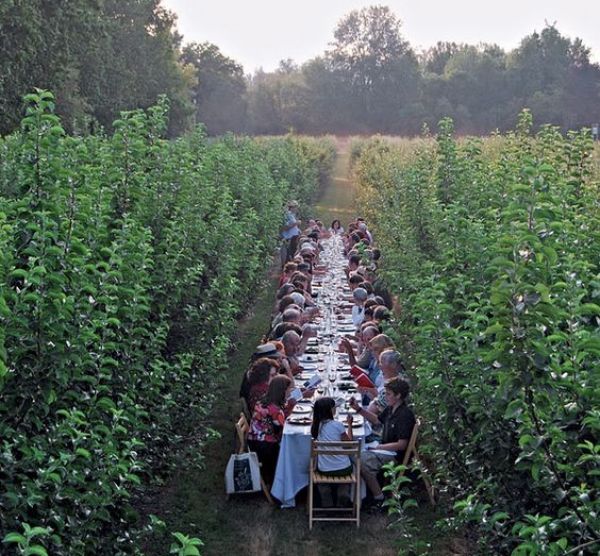
Long-table farm dinner
While high-quality food and beverage served in an authentic farm setting is a strong draw on its own, the true magic of a farm-to-table dinner and what elevates it from just an experience to a transformational one occurs when you add an element of discovery and learning.
Adding a storytelling component to the meal significantly enhances the culinary experience and elevates it to a transformational experience, the highest level of value-added agriculture. The storytelling element also heightens the perceived value and price that can be charged. Older adults age 55+ are especially attracted to experiences with educational value and the connection to nature a farm dinner offers. Agritourism culinary experiences can attract both younger and older adults.
Some examples of storytelling elements are:
- How the ingredients are grown and produced
- Personal narratives from the chefs, farmers, and artisans who supplied and prepared the ingredients
- Discussions with the chef on ingredient and preparation choices
- A history of the importance of an ingredient to the local area/culture
- The sustainable practices used at the farm
These stories aren't just entertaining; they create a personal connection between the diner and the experience; they add authenticity, help evoke feelings, and create memories that make the meal more meaningful.
But storytelling is just the beginning. For those looking to add another layer of engagement to the experience, consider augmenting the dinner with a hands-on activity, from a simple tour of the farm before the meal (perhaps showcasing some of your sustainable practices) to allowing the guests to help in the harvesting or preparing of the food for the dinner. A participatory experience further increases the perceived value of the meal and enables your guests to connect more deeply with the experience.
When all these elements are appropriately combined, the result is a transformational experience that your guests will treasure. Let's look at how one of our clients, Pingle's Farm, has mastered the art of a farm dinner in a unique way called Chef in the Bush.
Around 90 minutes east of Toronto, you will meet up with your party at the back edge of their farm at a campsite on the edge of the forest. Here their Chef Ben will prepare a nine-course meal, most of which is made right in front of you on the open fire using local seasonal ingredients. You can spend your time either watching the chef work his magic, hiking through the woods on one of the available trails, or simply enjoying the crackling fire with a drink in hand. The experience is an intimate one, with less than 20 guests. You can check out a video of it here.
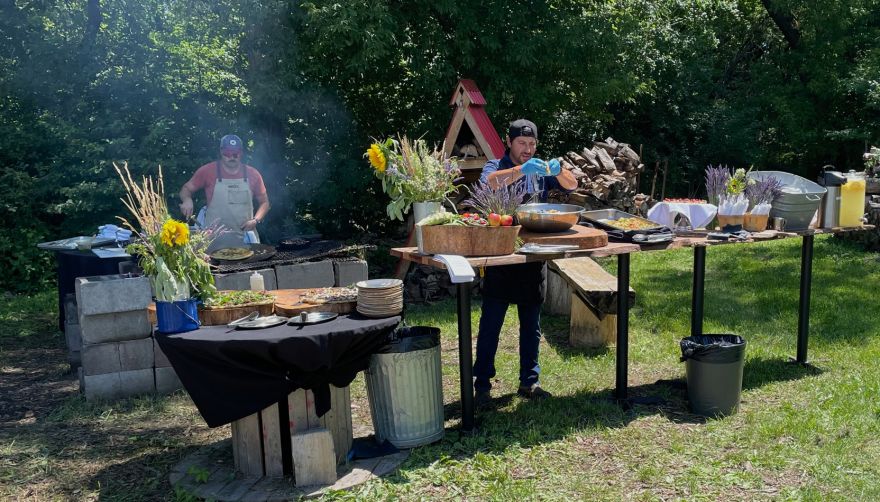
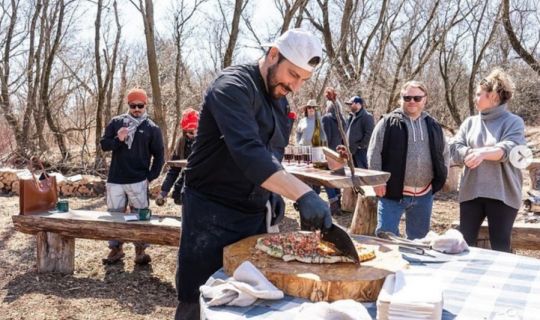
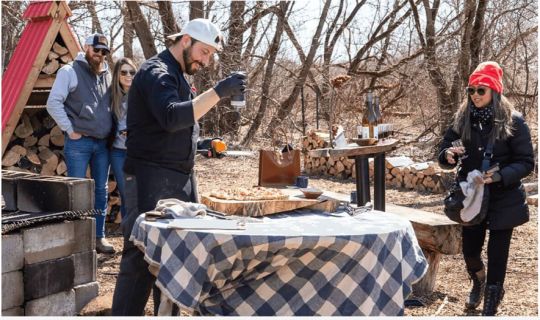
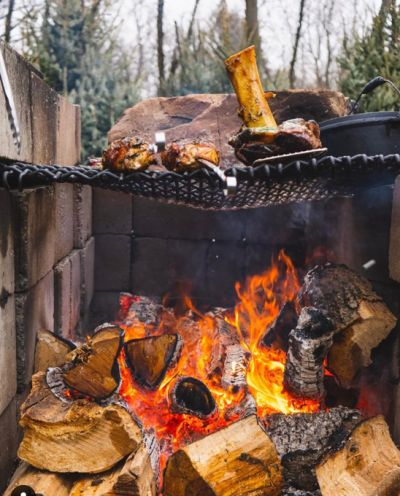
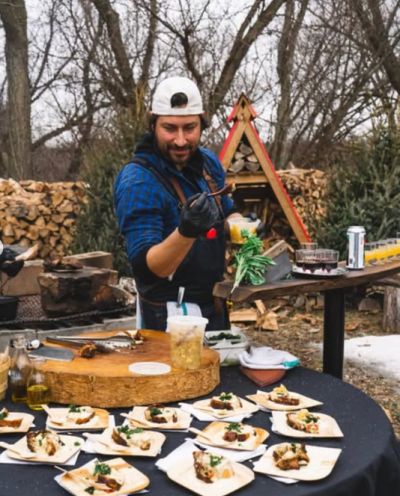
Pingle's Farm Chef in the Bush dinner
If you find yourself in the Midwest, particularly around Minnesota, Wisconsin, and Iowa, you might want to investigate another type of culinary agritourism: pizza farms . A more relaxed dining experience, guest bring their own blanket and chairs to dine picnic style among the green rolling hills of this rich farmland. The feast, of course, is pizza, crafted from local seasonal ingredients grown right on the farm and often accompanied by local brews and live music. Guests can usually wander the property, visit the animals, and enjoy the fresh air. If you want to learn more, you can read our article on Pizza Farms here
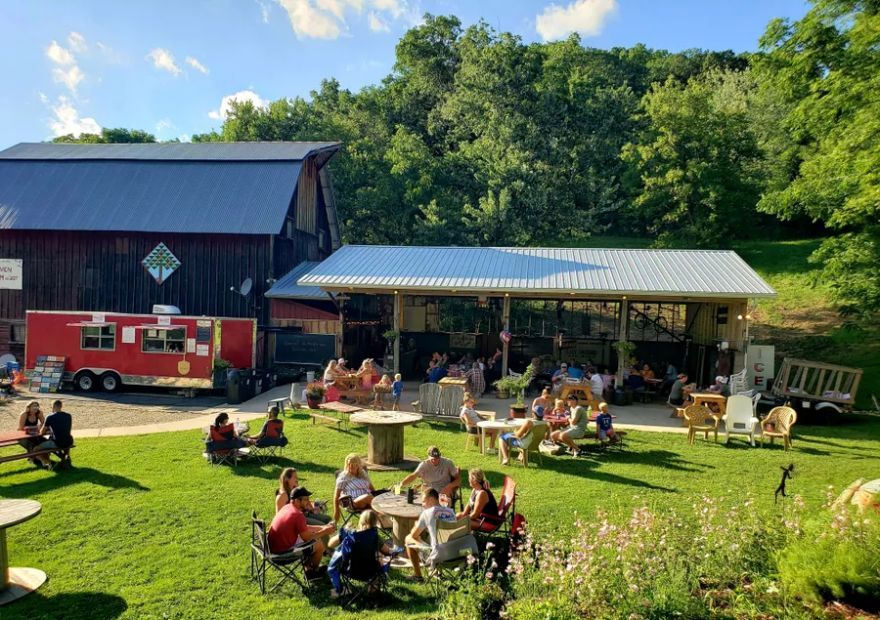
Pizza night at Winghaven Pizza Farmin Wisconsin
Culinary agritourism isn't limited to a dining experience. There are many ways to interact with your guests that can be combined with a meal or on their own, and that can provide the synergy of good food and unique and fulfilling experiences that make their visit transformational. Such as:
- Food and Beverage Tastings - allowing guests to sample the different flavors of your products, such as tomatoes or apples.
- Cooking Classes - perhaps illustrating traditional cooking methods or using unfamiliar foods.
- Baking/Canning/Cheesemaking Classes
- Harvesting Experiences - allow guests to assist in a harvest and then share in the bounty
- Culinary-focused farm stays - for a more in-depth experience that could involve several of the above experiences.
Seasonal crop-based agritourism festivals have become very popular at farms. In 2024, at least one person from almost half of U.S. households (49%) attended a crop-based festival. Strawberry festivals are the most popular, attracting nearly one-fifth of all households, followed by blueberries and peaches, each attracting 9% of households.
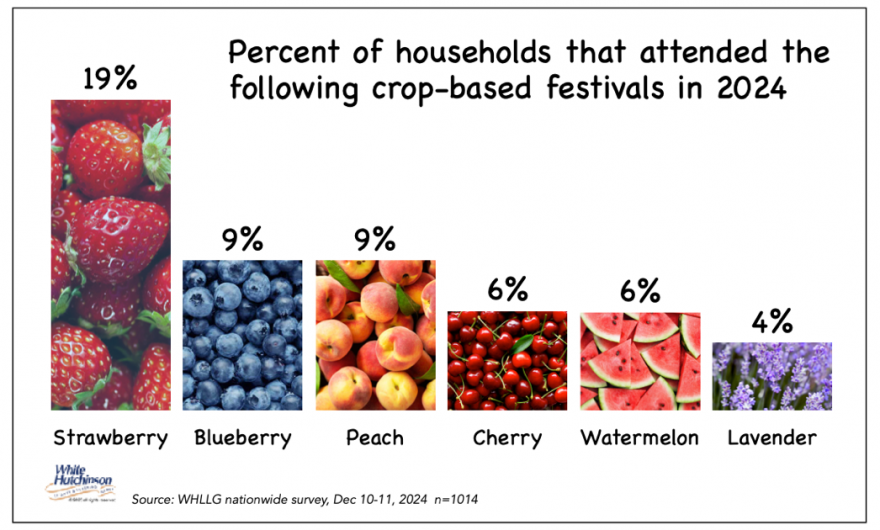
Some strawberry-themed foods featured at strawberry festivals include:
-
Savory & unique dishes
- Strawberry brisket tacos
- Strawberry nachos
- Strawberry gazpacho
- Strawberry-based barbecue sauce on BBQ meats
-
Desserts/sweets
- Strawberry shortcake
- Strawberry donuts
- Strawberry funnel cake
- Strawberry pie
- Strawberry cobbler
-
Chocolate dipped strawberries
- Strawberry dessert pizza
- Strawberry ice cream
-
Drinks
- Strawberry lemonade
- Strawberry margaritas (alcoholic & NA)
- Strawberry mojitos (alcoholic & NA)
- Strawberry cocktails (alcoholic & NA)
- Strawberry cider slushie (alcoholic & NA)
Culinary agritourism isn't just a fleeting food trend but rather an integral part of the shift in consumers' values towards sustainability, authenticity, and supporting local agriculture. Whether an elaborate 9-course meal or a simple meal of wholesome local foods, providing your guests with these culinary options will benefit you and your guests.
Subscribe to Agritourism Today



